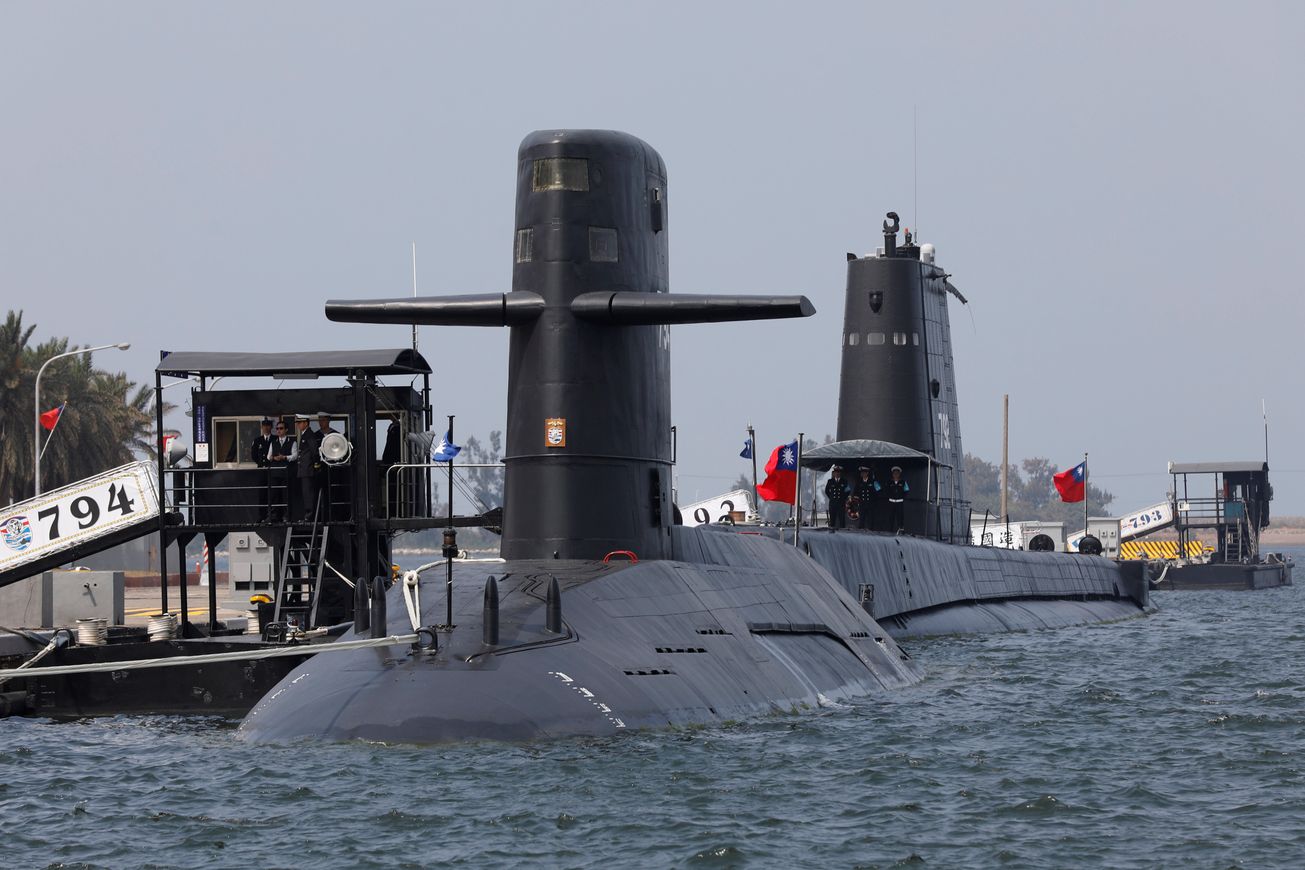The Republic of China’s (Taiwan) Navy’s first indigenous diesel-electric attack submarine (SSK) will be launched next September, the island’s CNA news agency reported. It is a decade ahead of the current Chien Lung class submarine purchased from the Netherlands. There are a total of eight submarines in the class of vessels.
Did China Destroy A US-Origin AWACS Aircraft Resembling Japan’s E-767? Satellite Images Hint So
The first submarine is being assembled at Kaohsiung City, slated to begin induction in the Republic of China (RoCN) Navy by 2025.
Scarce details based on a previously released scale model show an X-shaped rudder like the one on the Japanese Sōryū and Oyashio-class attack submarines.
The vessels weigh 2,500 tons and are 70 meters in length. A massive transfer of crucial technologies was approved under the President Donald Trump administration, with Reuters reporting that engineers from Korea, India, Canada, and other nations were assisting China Shipbuilding Corporation, Taiwan’s national shipbuilder, in the construction of the eight submarines of the class.
The submarine is expected to use US-origin 18 MK-48 Mod-6 1700 kilograms torpedoes and UGM-84L Harpoon missiles in 2020.
According to Navy Recognition, a version of the US Navy’s AN/BYG-1 submarine combat management system, used in its nuclear submarines, is being offered to Taiwan, with Lockheed Martin serving as the systems integrator.
The submarine is hoped to add to the asymmetric capabilities that Taiwan would require to withstand an attack by the People’s Republic of China (PRC), less focused on meeting the outsized Chinese adversary head-on, instead preventing their landing on the island by laying mines and striking Chinese transports carrying troops, supplies, tanks, and war material.
Major General Sun Lifang, spokesman of the Ministry of National Defense, said at the press conference that the national construction of submarines is one of the significant national defense independent plans.
Apart from the Chien Lung class, Taiwan’s current submarine force consists of four submarines: ROCS Hai Lung and ROCS Hai Hu; the World War Two vintage Trench-class submarines ROCS Hai Shih and ROCS Hai Pao were obtained from the US in the 1970s.
The last two were modernized to the Greater Underwater Propulsion Power Program (GUPPY) standard and painstakingly maintained by the Taiwanese Navy to be combat operational.
The submarine’s construction plan was boosted after Taiwan’s Parliament passed an extra $8.6 billion spending bill, in response to repeated shows of force by the People’s Republic of China (PRC), following 970 Chinese jets flying into its Air Defense Identification Zone (ADIZ) in 2021. This was more than double the 380 carried out in 2020 alone.

Taiwan’s Symmetric Vs. China’s Asymmetric Threat
Taiwan and its military face the handicap of being saddled with an enormous legacy, defense platforms against the PRC’s more asymmetric threats, which include swarms of several thousand small boats, jets, ships, missiles, and drones to overwhelm and swallow any resistance.
Pentagon-commissioned wargames by the RAND Corporation showed the devastating US and Taiwanese defeats before such a Chinese attack.
The EurAsian Times had reported how Taiwan’s former Chief of General Staff (CGS) Admiral Lee Hsin-min Overall Defense Concept (ODC), which envisages investing in such very cheap and otherwise simple platforms, was gathering dust owing to political exigencies.
These include extensive inventories of advanced UAVs for target acquisition, data linking, early-warning, mobile radar roles, and tactical reconnaissance; low-cost, short-range precision-guided munitions; stealth fast attack crafts and small missile boats dispersed and hidden across the island’s 200 fishing ports; flexible sea mine systems that even non-specialized mine-layers can drop; a massive array of quick reaction short and medium-range surface-to-air missiles; Harpoon Coastal Defense Systems (HCDS) to take out ships; large batteries of its own highly capable Hsiung Feng III land attack-cum-anti-ship missile; Man-Portable Air Defense Systems (MANPAD) and; High-Mobility Artillery Rocket Systems (HIMARS).
Primarily based on ‘fighting a swarm with a swarm,’ it practically affects a regular military (Taiwan’s) fighting a prolonged guerrilla war at a strategic level in a multi-layered campaign of attrition. But Taiwan outrightly implementing such programs means it has to tell its citizens to prepare for such an attack, jeopardizing the ruling Democratic People’s Party’s (DPP) political fortunes.
Eye-grabbing, menacing-looking F-16 jets, or M-109 Paladin Self-Propelled Howitzers (SPH) serve as a more reliable symbol of security before citizens, unlike low-key platforms like naval attack crafts or drones. Such defense reforms also put the DPP on the warpath with its opposing Kuomintang (KMT) party, which has often favored reuniting and reconciling with China – particularly the Communist Party of China (CPC), its former civil-war era opponent.
- The author can be reached at satamp@gmail.com
- Follow EurAsian Times on Google News




